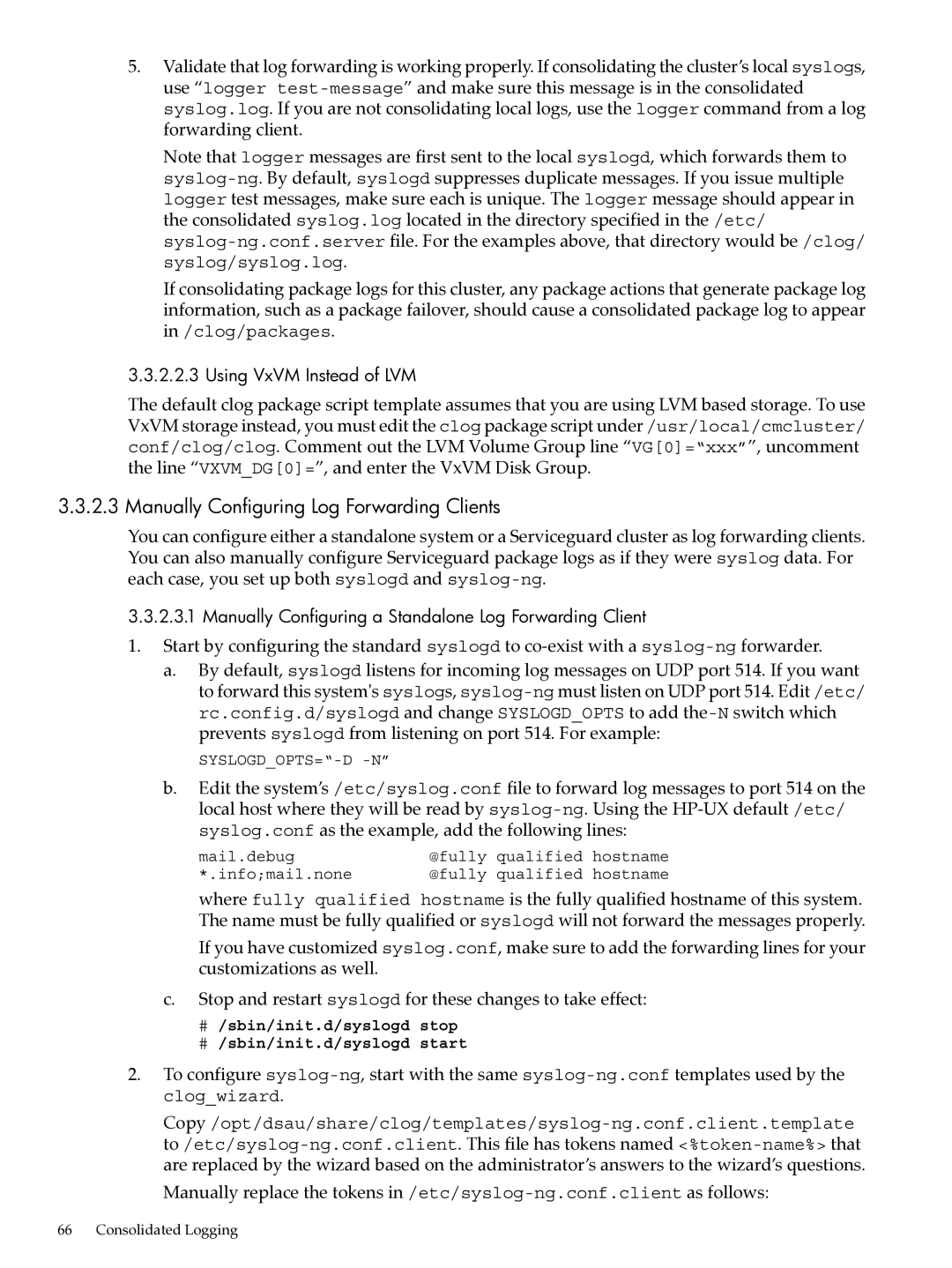5.Validate that log forwarding is working properly. If consolidating the cluster’s local syslogs, use “logger
Note that logger messages are first sent to the local syslogd, which forwards them to
If consolidating package logs for this cluster, any package actions that generate package log information, such as a package failover, should cause a consolidated package log to appear in /clog/packages.
3.3.2.2.3 Using VxVM Instead of LVM
The default clog package script template assumes that you are using LVM based storage. To use VxVM storage instead, you must edit the clog package script under /usr/local/cmcluster/ conf/clog/clog. Comment out the LVM Volume Group line “VG[0]=“xxx””, uncomment the line “VXVM_DG[0]=”, and enter the VxVM Disk Group.
3.3.2.3 Manually Configuring Log Forwarding Clients
You can configure either a standalone system or a Serviceguard cluster as log forwarding clients. You can also manually configure Serviceguard package logs as if they were syslog data. For each case, you set up both syslogd and
3.3.2.3.1 Manually Configuring a Standalone Log Forwarding Client
1.Start by configuring the standard syslogd to
a.By default, syslogd listens for incoming log messages on UDP port 514. If you want to forward this system's syslogs,
SYSLOGD_OPTS=“-D -N”
b.Edit the system’s /etc/syslog.conf file to forward log messages to port 514 on the local host where they will be read by
mail.debug | @fully | qualified | hostname |
*.info;mail.none | @fully | qualified | hostname |
where fully qualified hostname is the fully qualified hostname of this system. The name must be fully qualified or syslogd will not forward the messages properly.
If you have customized syslog.conf, make sure to add the forwarding lines for your customizations as well.
c.Stop and restart syslogd for these changes to take effect:
#/sbin/init.d/syslogd stop
#/sbin/init.d/syslogd start
2.To configure
Manually replace the tokens
66 Consolidated Logging
